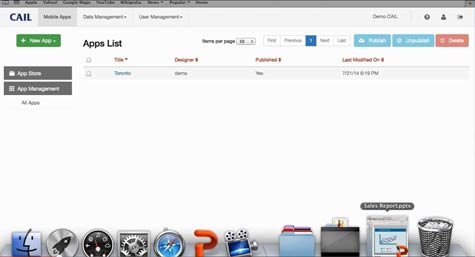One big frustration when it comes to mobile computing is the backlog of applications waiting to be built that is starting to build across the enterprise. Organizations clearly see mobile computing as an opportunity to not only increase productivity, but also get closer to their customers. The problem is that mobile application developers are both expensive and in short supply.
Looking to address that specific issue, CAIL Mobile Solutions has created a CAIL Mobile Design Platform that is designed to enable end users to build and deploy their own applications. This week, CAIL Mobility upgraded that platform to include the Doc-2-App tool for end users to actually edit documents running within a CAIL container on their mobile devices.
CAIL Mobile CEO Ron Thompson says that because the CAIL Mobile Design Platform provides a container that is capable of running on Apple iOS or Google Android devices, documents that are downloaded into that container can be edited by the end user. Those documents can then become part of whatever process the end user creates their mobile application around.
The mobile applications that are created using the CAIL Mobile Design Platform can leverage a variety of connectors to pull additional sources of data into the application environment.
Thompson says most of the real business innovation in the enterprise these days stems from the usage of mobile computing. The issue that businesses are facing is that innovation is being stunted by scarcity of mobile app developers. The CAIL Mobile Design Platform puts the visual development tools in the hands of the end users. Then, they can create the application on their own.
Once deployed, organizations can see how those mobile applications affect their business in a matter of days or weeks, versus waiting months for a professional developer to create an application.
Obviously, there are going to be times when a professional developer is an absolute requirement for app creation. But the majority of mobile applications that companies want to deploy are relatively simple. And more often than not, it’s going to be those simple applications that have the most profound impact on the business.




